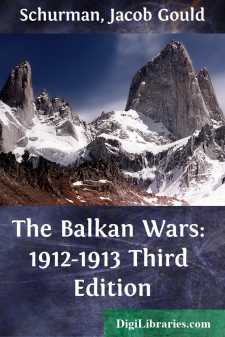Categories
- Antiques & Collectibles 13
- Architecture 36
- Art 48
- Bibles 22
- Biography & Autobiography 813
- Body, Mind & Spirit 142
- Business & Economics 28
- Children's Books 15
- Children's Fiction 12
- Computers 4
- Cooking 94
- Crafts & Hobbies 4
- Drama 346
- Education 46
- Family & Relationships 57
- Fiction 11828
- Games 19
- Gardening 17
- Health & Fitness 34
- History 1377
- House & Home 1
- Humor 147
- Juvenile Fiction 1873
- Juvenile Nonfiction 202
- Language Arts & Disciplines 88
- Law 16
- Literary Collections 686
- Literary Criticism 179
- Mathematics 13
- Medical 41
- Music 40
- Nature 179
- Non-Classifiable 1768
- Performing Arts 7
- Periodicals 1453
- Philosophy 64
- Photography 2
- Poetry 896
- Political Science 203
- Psychology 42
- Reference 154
- Religion 513
- Science 126
- Self-Help 84
- Social Science 81
- Sports & Recreation 34
- Study Aids 3
- Technology & Engineering 59
- Transportation 23
- Travel 463
- True Crime 29
The Balkan Wars: 1912-1913 Third Edition
Description:
Excerpt
I
TURKEY AND THE BALKAN STATES
The expulsion of the Turks from Europe was long ago written in the book of fate. There was nothing uncertain about it except the date and the agency of destiny.
THE TURKISH EMPIRE IN EUROPE
A little clan of oriental shepherds, the Turks had in two generations gained possession of the whole of the northwest corner of Asia Minor and established themselves on the eastern shore of the Bosphorus. The great city of Brusa, whose groves to-day enshrine the stately beauty of their mosques and sultans' tombs, capitulated to Orkhan, the son of the first Sultan, in 1326; and Nicaea, the cradle of the Greek church and temporary capital of the Greek Empire, surrendered in 1330. On the other side of the Bosphorus Orkhan could see the domes and palaces of Constantinople which, however, for another century was to remain the seat of the Byzantine Empire.
The Turks crossed the Hellespont and, favored by an earthquake, marched in 1358 over the fallen walls and fortifications into the city of Gallipoli. In 1361 Adrianople succumbed to the attacks of Orkhan's son, Murad I, whose sway was soon acknowledged in Thrace and Macedonia, and who was destined to lead the victorious Ottoman armies as far north as the Danube.
But though the provinces of the corrupt and effete Byzantine Empire were falling into the hands of the Turks, the Slavs were still unsubdued. Lazar the Serb threw down the gauntlet to Murad. On the memorable field of Kossovo, in 1389, the opposing forces met—Murad supported by his Asiatic and European vassals and allies, and Lazar with his formidable army of Serbs, Bosnians, Albanians, Poles, Magyars, and Vlachs. Few battles in the world have produced such a deep and lasting impression as this battle of Kossovo, in which the Christian nations after long and stubborn resistance were vanquished by the Moslems. The Servians still sing ballads which cast a halo of pathetic romance round their great disaster. And after more than five centuries the Montenegrins continue to wear black on their caps in mourning for that fatal day.
In the next two centuries the Ottoman Empire moved on toward the zenith of its glory. Mohammed II conquered Constantinople in 1453. And in 1529 Suleyman the Magnificent was at the gates of Vienna. Suleyman's reign forms the climax of Turkish history. The Turks had become a central European power occupying Hungary and menacing Austria. Suleyman's dominions extended from Mecca to Buda-Pesth and from Bagdad to Algiers. He commanded the Mediterranean, the Euxine, and the Red Sea, and his navies threatened the coasts of India and Spain.
But the conquests of the Turks were purely military. They did nothing for their subjects, whom they treated with contempt, and they wanted nothing from them but tribute and plunder. As the Turks were always numerically inferior to the aggregate number of the peoples under their sway, their one standing policy was to keep them divided—divide et impera. To fan racial and religious differences among their subjects was to perpetuate the rule of the masters....


